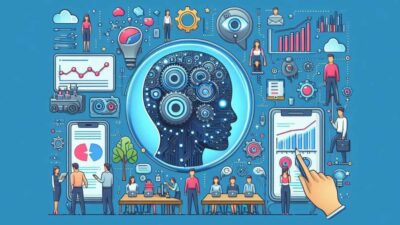
In today’s fast-paced business environment, the difference between thriving companies and those that merely survive often comes down to how efficiently they move prospects through their sales pipeline. AI sales pipeline tools have emerged as the defining factor that separates industry leaders from the competition, transforming disjointed sales processes into seamless, data-driven engines of growth. By leveraging artificial intelligence in sales processes, organizations are not only eliminating bottlenecks that have traditionally plagued sales pipelines but are gaining unprecedented visibility into every stage of the buyer’s journey. For sales teams drowning in administrative tasks and struggling with forecast accuracy, AI-powered sales automation offers a compelling solution—one that promises not just incremental improvements but a fundamental reimagining of how modern sales organizations operate, predict, and deliver results.
Understanding the Modern Sales Pipeline
Traditional Pipeline Challenges
Before exploring how AI transforms sales pipelines, it’s crucial to understand the persistent challenges that have plagued traditional approaches:
- Data fragmentation: Critical customer information scattered across multiple systems and platforms
- Manual updates: Sales representatives spending hours updating CRM records instead of selling
- Subjective forecasting: Predictions based more on gut feeling than data-driven insights
- Inconsistent follow-up: Opportunities falling through cracks due to timing or prioritization issues
- Limited visibility: Management lacking real-time insight into pipeline health and velocity
These challenges create significant business impacts, including:
| Challenge | Business Impact |
| Data fragmentation | Incomplete customer understanding and missed opportunities |
| Manual updates | Reduced selling time and higher operational costs |
| Subjective forecasting | Resource misallocation and cash flow challenges |
| Inconsistent follow-up | Revenue leakage and diminished customer experience |
| Limited visibility | Reactive rather than proactive management decisions |
Components of an Effective Sales Pipeline
A well-structured sales pipeline typically encompasses several distinct stages, each representing a milestone in the buyer’s journey:
- Prospecting: Identifying and qualifying potential customers
- Initial Contact: Making the first meaningful connection
- Needs Assessment: Understanding requirements and pain points
- Proposal/Quotation: Presenting tailored solutions and pricing
- Negotiation: Addressing objections and finalizing terms
- Closing: Securing commitment and finalizing agreements
- Post-Sale: Ensuring customer success and identifying expansion opportunities
The effectiveness of a sales pipeline depends on how smoothly prospects move from one stage to the next, with minimal delays and maximum conversion rates at each transition point.
How AI Transforms Sales Pipeline Management
AI-Powered Data Integration and Enrichment
At the foundation of any seamless sales pipeline is comprehensive, accurate data. AI sales pipeline tools excel at:
- Automated data collection: Gathering prospect information from multiple sources without manual input
- Intelligent enrichment: Supplementing basic contact details with relevant firmographic and behavioral data
- Real-time updating: Ensuring all pipeline data remains current without requiring sales team intervention
These capabilities eliminate the persistent problem of incomplete or outdated CRM records that has traditionally undermined pipeline management efforts.
At Salesix.ai, our systems continuously monitor prospect interactions across channels—including email, voice calls, web sessions, and social media—to build comprehensive profiles that inform every stage of the sales process.
Predictive Lead Scoring and Prioritization
Perhaps the most impactful application of artificial intelligence in sales processes is predictive lead scoring. Unlike traditional methods that rely on static rules or subjective assessments, AI systems:
- Analyze hundreds of variables to determine propensity to purchase
- Identify subtle buying signals that human observers might miss
- Continuously refine scoring models based on actual outcomes
- Adapt to changing market conditions in real-time
This intelligence enables sales teams to focus their efforts on prospects with the highest conversion potential—a critical capability in competitive markets where timing and attention allocation determine success.
Intelligent Pipeline Visualization and Analysis
Making sense of complex pipeline data has traditionally required extensive manual analysis. AI sales pipeline management software transforms this process through:
- Dynamic visualizations: Interactive dashboards that highlight trends, bottlenecks, and opportunities
- Anomaly detection: Automatic identification of deals that deviate from expected patterns
- Comparative analysis: Benchmarking current pipeline metrics against historical performance
- Scenario modeling: Projecting outcomes based on different strategies or market conditions
These capabilities provide sales leaders with unprecedented visibility into pipeline health and performance drivers, enabling more informed decision-making.
Key AI Technologies Powering Modern Sales Pipelines
Machine Learning for Sales Predictions
Machine learning sales predictions represent one of the most valuable applications of AI in pipeline management. These systems analyze historical data to:
- Forecast deal close probabilities with remarkable accuracy
- Predict sales cycle duration for different prospect types
- Identify factors that influence conversion rates
- Recommend optimal next actions for each opportunity
By leveraging these insights, sales teams can make more informed decisions about resource allocation, forecasting, and engagement strategies.
Natural Language Processing for Communication Analysis
Natural Language Processing (NLP) technologies analyze written and verbal communications to extract meaningful insights from:
- Email exchanges between sales representatives and prospects
- Call transcripts from sales and discovery conversations
- Chat interactions with website visitors and qualified leads
- Support tickets and customer feedback
This analysis helps identify sentiment, buying intent, objections, and other critical factors that influence pipeline progression.
Process Automation for Workflow Optimization
AI-powered sales automation dramatically improves pipeline efficiency by:
- Automatically advancing deals that meet specific criteria
- Triggering appropriate follow-up actions based on prospect behavior
- Scheduling meetings without manual coordination
- Generating personalized proposal documents and presentations
These automations reduce administrative burden while ensuring consistent execution of proven sales processes.
Implementing AI Sales Pipeline Tools: Strategic Approaches
Assessment and Planning
Successful implementation of AI sales pipeline tools begins with thorough assessment and planning:
- Process mapping: Documenting current pipeline stages, workflows, and metrics
- Pain point identification: Determining specific areas where AI can deliver greatest value
- Success metric definition: Establishing clear KPIs for measuring implementation impact
- Change management planning: Preparing the organization for new workflows and capabilities
This preparatory work ensures that AI implementation addresses genuine business needs rather than simply deploying technology for its own sake.
Data Preparation and Integration
The effectiveness of AI sales pipeline tools depends heavily on data quality and accessibility:
- CRM data cleansing: Eliminating duplicates, standardizing formats, and filling information gaps
- Integration configuration: Connecting AI systems with existing sales and marketing platforms
- Historical data preparation: Formatting past pipeline data for AI training and analysis
- Permission and access management: Ensuring appropriate security while enabling necessary data flow
Organizations that invest in these foundational elements achieve significantly better results from their AI implementations.
Training and Adoption
Even the most sophisticated AI sales pipeline tools deliver value only when properly adopted by sales teams:
- Phased implementation: Introducing AI capabilities gradually to prevent overwhelming users
- Role-specific training: Tailoring education to different stakeholders’ needs and workflows
- Early win identification: Highlighting quick victories to build organizational momentum
- Feedback mechanisms: Creating channels for users to share experiences and suggestions
These adoption strategies help overcome the natural resistance that often accompanies significant workflow changes.
AI Tools for Different Pipeline Stages
Prospecting and Lead Generation
AI tools transform the earliest pipeline stages through:
- Ideal customer profile (ICP) identification: Analyzing successful past customers to refine targeting
- Lookalike modeling: Finding prospects with characteristics similar to best customers
- Intent data analysis: Identifying organizations actively researching relevant solutions
- Automated outreach optimization: Testing and refining initial contact strategies at scale
These capabilities ensure that pipelines start with high-quality prospects who fit established buyer profiles.
Qualification and Discovery
During qualification and discovery stages, AI contributes through:
- Automated qualification: Assessing prospect fit based on predefined criteria
- Intelligent question sequencing: Guiding conversations to gather critical information
- Buying signal identification: Recognizing verbal and behavioral indicators of purchase intent
- Objection prediction: Anticipating concerns before they arise
At Salesix.ai, our AI voice agents excel in these early pipeline stages, conducting natural conversations that qualify prospects and gather essential information before human sales representatives engage.
Proposal Generation and Negotiation
As opportunities progress to proposal and negotiation stages, AI provides value through:
- Dynamic content assembly: Creating customized proposals based on prospect needs
- Pricing optimization: Recommending ideal price points based on deal characteristics
- Close probability assessment: Providing objective win likelihood estimations
- Concession impact analysis: Evaluating how different terms affect deal value
These insights enable more strategic proposal development and negotiation approaches.
Closing and Expansion
In the final pipeline stages, AI supports successful outcomes through:
- Close timing recommendations: Identifying optimal moments to request commitment
- Digital signature automation: Streamlining final documentation processes
- Customer success prediction: Forecasting implementation and adoption challenges
- Expansion opportunity identification: Highlighting additional product fit within customer accounts
These capabilities help maximize both initial conversions and long-term customer value.
Sales Funnel Optimization with AI
Conversion Rate Analysis and Enhancement
AI sales conversion optimization tools analyze pipeline data to:
- Identify stages with below-benchmark conversion rates
- Isolate factors contributing to stalled opportunities
- Recommend specific interventions to improve progression
- Test and measure improvement strategies
This continuous optimization process gradually eliminates pipeline bottlenecks and improves overall conversion efficiency.
Velocity Management
Beyond conversion rates, AI helps optimize pipeline velocity—the speed at which opportunities progress from initial qualification to closed business:
- Stall prediction: Identifying opportunities likely to exceed typical stage durations
- Acceleration recommendations: Suggesting tactics to move stalled deals forward
- Process benchmarking: Comparing current velocity metrics to historical baselines
- Time-to-revenue forecasting: Projecting cash flow based on pipeline velocity trends
These insights help sales leaders balance the sometimes competing objectives of high conversion rates and rapid deal progression.
AI Customer Journey Mapping
Understanding how prospects navigate the buying process has traditionally required extensive qualitative research. AI customer journey mapping tools transform this process by:
- Analyzing digital interactions across multiple channels
- Identifying common paths to purchase
- Highlighting decision points and influential touchpoints
- Revealing friction areas that impede progress
This intelligence enables more thoughtful pipeline design that aligns with actual buyer behavior rather than theoretical models.
Advanced Applications of AI in Sales Pipeline Management
Intelligent Sales Forecasting
AI has revolutionized sales forecasting through:
- Deal-level probability analysis: Assessing each opportunity on hundreds of factors
- Pipeline simulation: Projecting outcomes under different scenarios
- Market trend incorporation: Adjusting forecasts based on broader industry conditions
- Rolling forecast updates: Continuously refining projections as new data emerges
These capabilities produce forecasts of unprecedented accuracy, enabling better business planning and resource allocation.
Competitive Intelligence Integration
Leading AI sales pipeline tools incorporate competitive intelligence through:
- Competitor mention monitoring: Tracking when prospects reference alternative solutions
- Win/loss pattern analysis: Identifying factors that influence competitive outcomes
- Positioning recommendations: Suggesting messaging adjustments based on competitive dynamics
- Market share visualization: Tracking performance relative to key competitors
This intelligence helps sales teams adapt their approaches based on competitive realities rather than operating in a vacuum.
Churn Prevention and Expansion Planning
The most sophisticated AI systems extend beyond initial sale to address retention and growth:
- Early warning systems: Identifying satisfaction or usage issues before they trigger churn
- Renewal risk assessment: Predicting which customers may not renew contracts
- Expansion opportunity scoring: Highlighting accounts with high upsell potential
- Account health monitoring: Tracking engagement metrics that correlate with retention
These capabilities ensure that pipeline management doesn’t end at initial conversion but continues throughout the customer lifecycle.
Measuring the Impact of AI on Sales Pipeline Performance
Key Performance Indicators
Evaluating AI’s impact on sales pipelines requires tracking meaningful metrics:
- Efficiency metrics:
- Average time in each pipeline stage
- Administrative hours per opportunity
- Number of touches required per conversion
- Quality indicators:
- Win rate by lead source and pipeline stage
- Average deal size and margin
- Forecast accuracy percentage
- ROI measurements:
- Cost per acquisition (CPA)
- Customer lifetime value (CLV)
- Revenue per sales representative
Regular analysis of these metrics helps quantify AI’s business impact and identify areas for continued improvement.
Before and After Implementation Comparison
Organizations can better understand AI’s value through before-and-after analysis:
| Metric | Pre-AI Typical Performance | Post-AI Potential |
| Lead qualification accuracy | 25-40% | 60-75% |
| Pipeline visibility | Limited to CRM updates | Real-time with predictive insights |
| Forecast accuracy | ±25-30% | ±10-15% |
| Sales rep administrative time | 30-40% of working hours | 10-15% of working hours |
| Average sales cycle | Industry benchmark | 20-30% reduction |
These comparisons demonstrate AI’s potential to transform sales pipeline performance across multiple dimensions.
Overcoming Challenges in AI-Driven Sales Pipelines
Data Quality and Integration Issues
The effectiveness of AI sales pipeline tools depends on data quality and accessibility. Common challenges include:
- Incomplete CRM records: Missing information that undermines AI analysis
- System silos: Critical data trapped in disconnected platforms
- Inconsistent definitions: Varying interpretations of pipeline stages and metrics
- Historical data limitations: Insufficient past examples for effective AI training
Organizations can address these challenges through:
- Implementing data governance policies
- Investing in integration technologies
- Standardizing pipeline terminology and processes
- Supplementing internal data with third-party sources
These measures create the solid data foundation required for effective AI implementation.
Change Management and User Adoption
Even the most sophisticated AI tools deliver value only when properly adopted. Typical obstacles include:
- Resistance to workflow changes: Reluctance to abandon familiar processes
- AI mistrust: Skepticism about algorithm-generated recommendations
- Learning curve challenges: Difficulty mastering new interfaces and capabilities
- “Black box” concerns: Discomfort with decisions based on opaque logic
Successful organizations overcome these challenges through:
- Emphasizing augmentation rather than replacement
- Providing transparency into AI decision factors
- Delivering comprehensive, role-specific training
- Creating formal feedback mechanisms
These approaches help teams embrace AI as a valuable partner rather than a mysterious or threatening force.
Integration with Existing Sales Methodologies
Many organizations have invested heavily in specific sales methodologies. AI implementation succeeds when it:
- Enhances rather than replaces established approaches
- Adapts to organization-specific terminology and processes
- Provides configurable workflows that accommodate methodological requirements
- Demonstrates clear value within existing frameworks
This flexibility ensures that AI becomes an enabler of current strategies rather than requiring wholesale process reinvention.
The Future of AI in Sales Pipeline Management
Emerging Trends and Technologies
The AI sales pipeline landscape continues to evolve rapidly. Key trends include:
- Autonomous pipeline management: Systems that not only analyze but actively manage routine pipeline activities without human intervention
- Augmented reality interfaces: Visual overlays that provide real-time pipeline insights during customer interactions
- Voice-driven analytics: Natural language interfaces that allow sales professionals to query pipeline data through conversation
- Collaborative intelligence: AI systems that learn across organizations while protecting proprietary data
Organizations that monitor these trends position themselves to capitalize on emerging capabilities that may deliver competitive advantages.
Preparing Your Sales Organization for Advanced AI
Forward-thinking companies are already preparing for the next wave of AI innovation by:
- Building adaptive data architectures that can accommodate new AI applications
- Creating cultures that embrace continuous technological evolution
- Developing hybrid teams where human and artificial intelligence complement each other
- Investing in skills development that prepares sales professionals for augmented workflows
These preparations ensure that organizations can quickly adopt emerging technologies rather than struggling to catch up with competitors.
Conclusion
The integration of AI sales pipeline tools represents not just an incremental improvement but a fundamental transformation in how businesses manage their sales processes. From initial prospect identification to close and beyond, artificial intelligence is eliminating longstanding pipeline challenges while creating new capabilities that were previously unimaginable. Organizations that embrace these technologies gain significant advantages: more accurate forecasts, more efficient processes, and more consistent execution of proven sales strategies.




